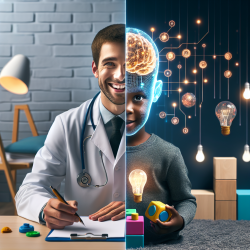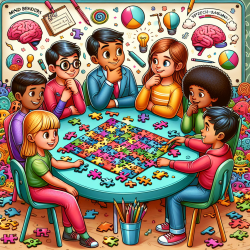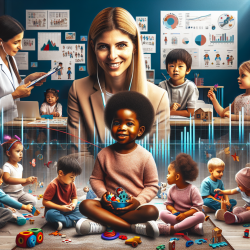Introduction
In the ever-evolving field of speech-language pathology, the integration of advanced technologies such as deep learning can revolutionize the way practitioners deliver therapy. Deep learning, a subset of artificial intelligence, has shown significant promise in various domains by improving prediction accuracy and handling complex datasets. This blog post will explore how insights from the research on deep learning models for predicting gas adsorption capacity of nanomaterials can be applied to speech-language pathology, particularly in online therapy services like those provided by TinyEYE.
Understanding Deep Learning
Deep learning models, such as multilayer perceptron (MLP) and long short-term memory (LSTM) networks, have demonstrated high prediction accuracy in complex datasets. These models can process large volumes of data and identify intricate patterns, making them ideal for applications where traditional methods fall short. In the context of nanomaterials, these models have been used to predict gas adsorption capacities with remarkable precision, outperforming traditional machine learning algorithms.
Applying Deep Learning in Speech-Language Pathology
While the original research focuses on nanomaterials, the underlying principles of deep learning can be translated to speech-language pathology. Here are a few ways practitioners can leverage these insights:
- Data-Driven Assessment: Deep learning models can analyze speech and language data to identify patterns and predict outcomes, enabling more personalized and effective therapy plans.
- Enhanced Monitoring: By continuously analyzing therapy session data, deep learning can provide real-time feedback on a child's progress, allowing for timely adjustments to therapy strategies.
- Predictive Analytics: Similar to predicting gas adsorption, deep learning can forecast a child's potential speech and language development trajectory, helping practitioners set realistic goals and expectations.
Encouraging Further Research
Given the promising results of deep learning in other fields, speech-language pathologists are encouraged to explore its potential within their practice. Collaborations with data scientists and researchers can lead to the development of specialized models tailored to speech-language pathology needs. Practitioners can also participate in pilot studies to test the efficacy of these models in real-world settings.
Conclusion
Integrating deep learning into speech-language pathology holds the potential to transform therapeutic outcomes for children. By harnessing the power of data-driven decisions, practitioners can offer more precise, personalized, and effective therapy. As the field advances, continued research and collaboration will be key to unlocking the full potential of these technologies.
To read the original research paper, please follow this link: Deep Learning Models for Predicting Gas Adsorption Capacity of Nanomaterials.










